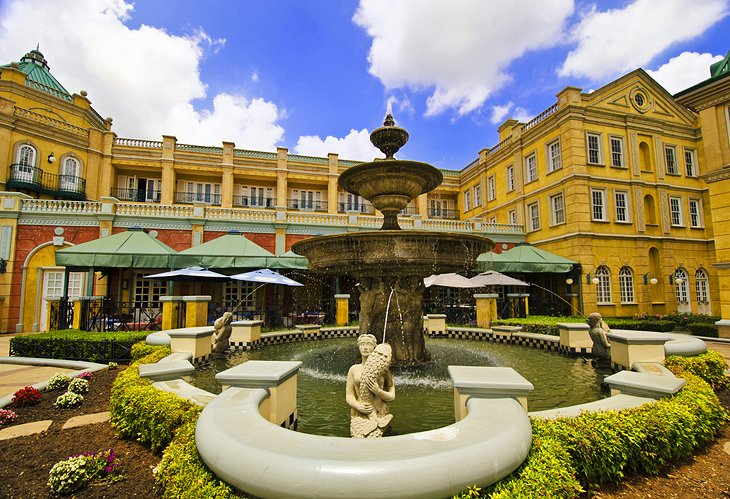Johannesburg North Attractions Things To Know Before You Get This
Table of ContentsJohannesburg North Attractions - An OverviewUnknown Facts About Johannesburg North AttractionsAll About Johannesburg North AttractionsMore About Johannesburg North AttractionsExamine This Report about Johannesburg North AttractionsThe Buzz on Johannesburg North AttractionsThe smart Trick of Johannesburg North Attractions That Nobody is Discussing
However you need to maintain security in mind and tourists must remain alert at all times when in unfamiliar surroundings. Speak to the locals when you are in town to locate out concerning the location you are remaining in. Johannesburg North attractions. When on the street (this does not use to purchasing malls and various other protected atmospheres) best basic advice is to attempt your best to look like a local and to stay clear of displaying any type of form of riches
How Johannesburg North Attractions can Save You Time, Stress, and Money.
Teacher Revil Mason O. J. (Thomson, 1946) checked out the Witwatersrand's pre-colonial background. His historical job blew up the 'em pty land' misconception, according to which the area was without human habitation before the arrival of European inhabitants. In his magazines Prehistory of the Transvaal: A Record of Human Task (1962) and Beginnings of Black People of Johannesburg and the Southern Western Central Transvaal Advertisement 3501880 (1986 ), Teacher Mason demonstrated the extent of social and financial advancement in the area prior to Europeans set foot here.

Unknown Facts About Johannesburg North Attractions
In 1878, David Wardrop located gold in quartz capillaries at Zwartkop, north of Krugersdorp. In 1881, Stephanus Minnaar came across gold on the ranch Kromdraai, near the Cradle of Mankind.
In March 1886, an outcropping (soon to be called the Key Reef) was found, fairly fortunately, on Gerhardus Oosthuizen's farm Langlaagte. Some say that the Lancastrian coal miner George Pedestrian found this reef. Another travelling English prospector, George Harrison (that had actually previously functioned in Australian mines) acquired a prospecting licence in regard of Langlaagte in May 1886.
He determined to relocate on in a quest for greener fields, and disposed of his Langlaagte insurance claim for the princely amount of 10. Alas: below lay the wealthiest goldfield ever before found. The exploration of this rich auriferous coral reef provoked a gold thrill that signalled completion of bucolic serenity in the southern Transvaal.
It would certainly, within six years, end up being the largest community in southern Africa. Within a years, it would make the Z. A. R. till then an anarchical and insolvent little state the most affluent nation in Africa. By the turn of the century, the Z. A. R. was to go beyond Russia, Australia and the United States of America to come to be the world's leading gold manufacturer, creating even more than a quarter of the world's gold.
Johannesburg North Attractions - Truths
It was called Ferreira's Camp, called after Colonel Ignatius Ferreira. He was a Boer traveler upon whom the British authorities had bestowed the condition of Buddy of the A Lot Of Distinguished Order of St Michael and St George (entitling him to the post-nominal letters C. M. G.) in thankfulness for his duty in the check this battle that had actually deposed the Pedi king Sekhukhune in 1879.
2 various other camps were developed: Meyer's Camp on the ranch Doornfontein, and Paarl Camp. The latter was nicknamed Afrikander Camp; several individuals from the Cape Nest Click Here cleared up there.

The Main Principles Of Johannesburg North Attractions
This name acquired money by word of mouth, such that the State Assistant affirmed the name to the Mining Commissioner on 9 October 1886. Stands in the village were auctioned on 8 December 1886. While some stands were cost 10, others were torn down for just sixpence.
2 years later, these erven were to change hands for as much as 750 each. The tented camps diminished as a dorp of corrugated iron structures created and increased north of the mines situated along the Main Reef Road. Areas such as Jeppe's Town (where working-class immigrants erected their houses) and Doornfontein (where the wealthy brand-new 'Randlords' started to construct their opulent residences) were soon added to the ever-expanding map of the town.
More About Johannesburg North Attractions
Apart check from the road names, there were no indications of Johannesburg being situated in a Dutch-speaking nation., almost everybody spoke English and also the Government slaves attended to one in English, unless they were very first addressed in the Taal (or Reduced Dutch)'.
Britain had an interest in making certain optimal problems for gold production on the Witwatersrand, and that the gold was exported to London instead than Berlin an essential made all the more clamant by the Z. A. R.'s boosting toenadering with Germany. Mine owners were on a crash course with Head of state Kruger, whose plan of monopolistic concessions (usually given to his cronies) prevented mining companies from procuring materials of materials (especially dynamite) and work on their very own, more affordable terms
Rumored Buzz on Johannesburg North Attractions
In 1890, the Volksraad had restricted the franchise to white men who had resided in the Z. A. R. for fourteen years or longer, thus disqualifying most of the immigrants (who happened to be the significant factors to the fiscus). Nonetheless, agitation for the ballot was a plain pretense for advertising a various program; a lot of uitlanders concerned themselves as momentary site visitors and had no intent of staying in the Z.